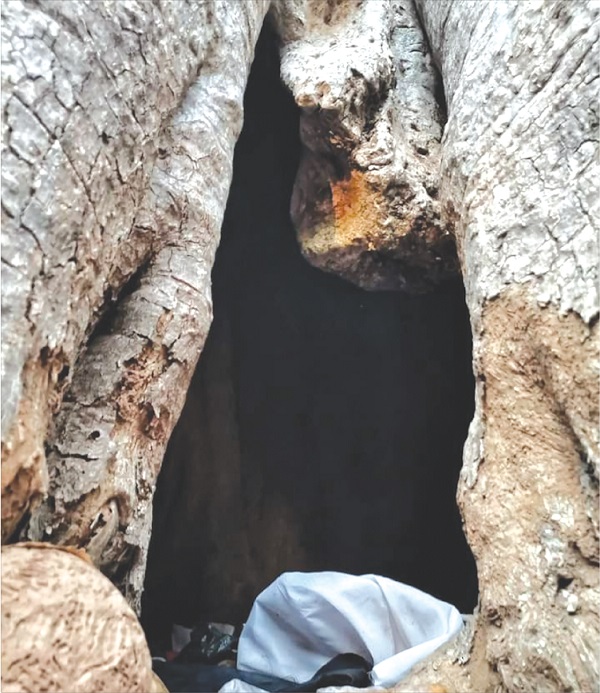
Yendi's Naa Dataa Tua; Execution place of Ya-Na's rivals
It is a giant historic baobab tree located in Yendi, the traditional seat of Dagbon.
In the olden days, people who were found to have had sexual affairs with a Ya-Na's wife were beheaded and their heads thrown into a hole in the tree.
Called Naa Dataa Tua (King’s rival tree), it is a sacred tree which has been in existence for centuries.
Advertisement
History has it that, some linguists and individuals used to have amorous relationships with some of the Ya-Na's wives, which is forbidden in the Dagbon tradition.
To deter people from engaging in such acts, anyone found culpable was beheaded.
It is said that their necks were placed on an oval shaped laterite rock, their heads cut off and thrown into a hole in the baobab tree, while their bodies were disposed of in a valley.
Current state
The tree, which has been preserved as a sacred monument and a tourist attraction, is very huge, with a big hole in it.
Few metres away from it are the oval shaped laterite rocks where victims were placed and beheaded.

Though, the site has not been developed, the baobab tree and the rock have been preserved for their cultural significance.
The King of Dagbon then was said to have enskinned someone as a chief executor (Chal lana), which is now a chieftaincy title in modern day Dagbon.
Rationale
A historian, Abdulai Mohammed Mutala, in an interview with the Daily Graphic, said the execution was scary, and helped to prevent people from drawing close to the king’s wives or have any amorous relations with them.
He explained that when a person was suspected, the Ya-Na would consult the gods as tradition demanded, to confirm their involvement before the execution.
However, he said the practice had since stopped and animals were now beheaded when a person was found culpable of such an act.
"This practice has now changed to the slaughtering of a dog, donkey or horse.
“Aside from performing the rituals at the baobab tree, whenever they are performing the funeral rites of a Ya-Na, they slaughter the animals and dispose of them in a river in the locality, so whoever might have had affairs with any of the Ya-Na's wives in the past would incur the wrath of the gods," Mr Mutala added.
He noted that if the site was properly developed, it could become a tourist centre, adding, "it's already a tourist destination, particularly for students but the site is not developed”.
He, therefore, called on authorities, especially the Ministry of Tourism, to consider developing the place so as to boost tourism in the area.
Tourism potential
In a recent interview with the Daily Graphic, the Northern Regional Manager of the Ghana Tourism Authority, Hakeem Ismael, said the Naa Dataa Tua was one of the notable sites which had great tourism potential in the region.
He said the authority had captured the site in its development plan and that it would be given the necessary attention and developed when funds were made available.
Writer's email: mohammed.fugu@graphic.
com.gh



